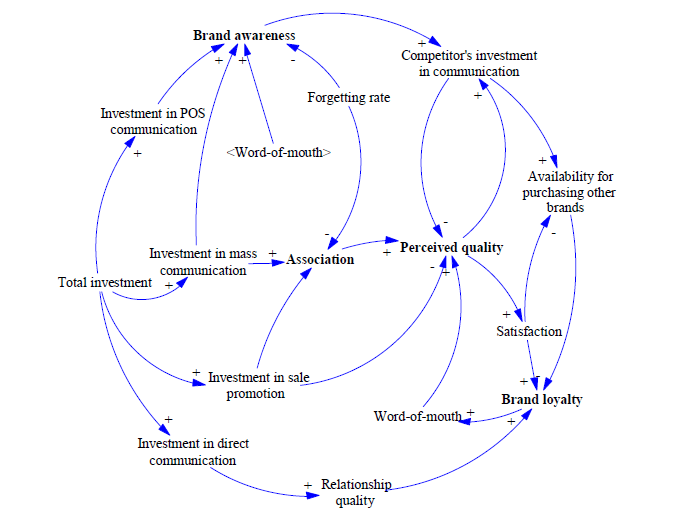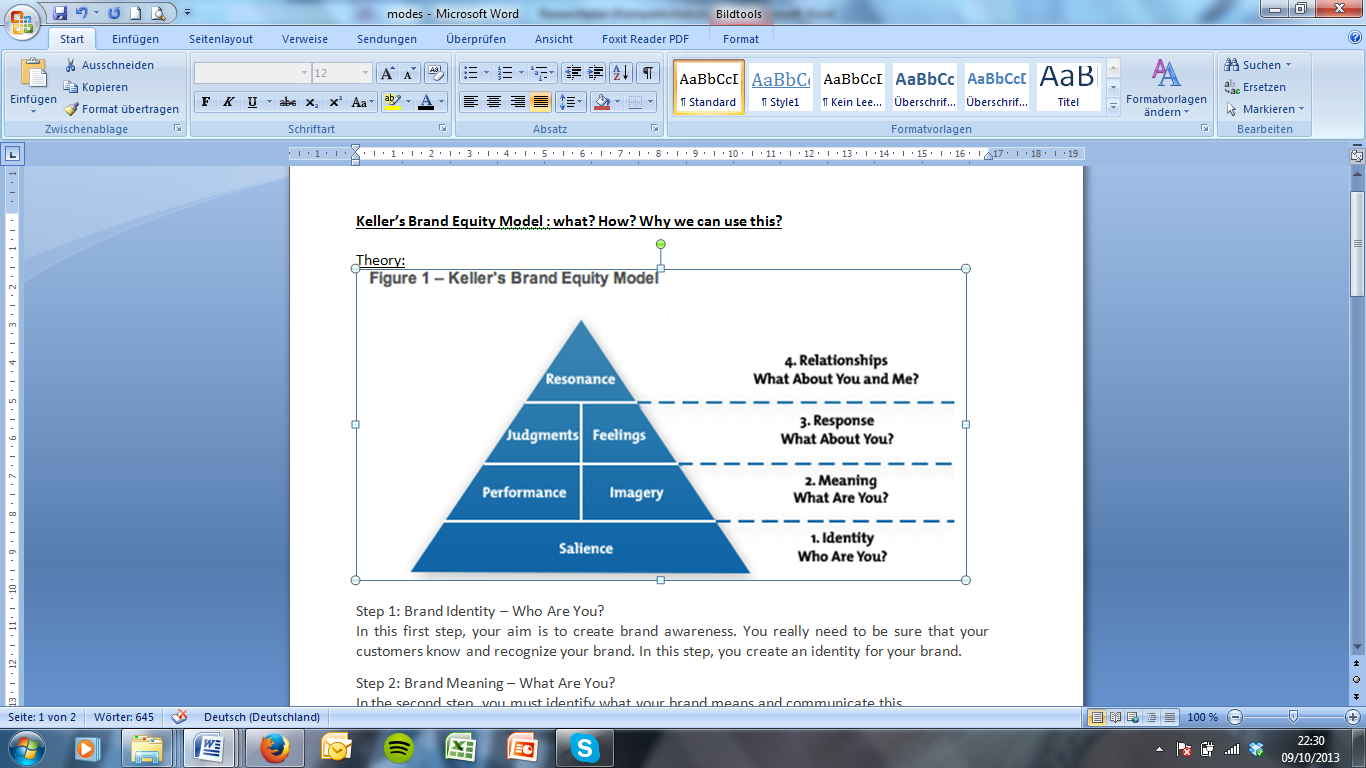
- •Introduction
- •1.1 Background and description of the commissioner
- •1.2 Research problem Problem analysis
- •A framework for corporate branding
- •2.2 Customer theories
- •2.2.1 Customer relationship management theory
- •2.2.2 Customer relationship marketing ladder
- •2.2.3 Thomassen Model
- •2.2.4 Experience model by Goossen
- •2.2.5 Maslow´s Hierarchy of Needs
- •2.2.6 The Brand Pyramid-Building Customer Loyalty
- •2.3 Organisational Management Theory
- •3.1 Research approach
- •3.2 Data collection process and methods
- •3.3 Data analysis process and tools
- •3.4 Reliability and Validity
- •Inter-rater reliability
- •Internal consistency reliability
- •4. Formative Validity when applied to outcomes assessment it is used to assess how well a measure is able to provide information to help improve the program under study.
- •4. Bibliography
Brand & Strategic management course |
Research plan |
The shopping street as part of the Art Factory brand |
Anais Berthelot, Béatrice Lecomte, Heleen Timmer, Zane Erina, Maria Thanbichler 14/10/2013
|
Table of contents
1. Introduction
1.1 Background and description of the commissioner
1.2 Research problem
1.3 Aims and objectives
1.4 Research question
2. Theoretical framework
2.1 Brand theories
2.1.1 Mental model of brand equity
2.1.2 Keller´s brand equity model
2.1.3 A framework for corporate branding
2.2 Customer theories
2.2.1 Customer relationship management theory
2.2.2 Customer relationship marketing ladder
2.2.3 Thomassen model
2.2.4 Experience model by Goossen
2.2.5 Maslow´s Hierarchy of Needs
2.2.6 Brand pyramid-building customer loyalty
2.3 Organisational management theory
3. Research approach and methods
3.1 Research approach
3.2 Data collection process and methods
3.3 Data analysis process and tools
3.4 Reliability and Validity
4. Bibliography
Introduction
1.1 Background and description of the commissioner
The main commissioner is the Art Factory as a whole, however the research will only focus on the shopping area of the Art Factory. The Art Factory itself, a culture & congress centre, located in a modern area near the river, situated opposite of the old town. The area includes several shops, tourist information, eating facilities, cinema, theatre, art gallery, and concert venue. Aside from facilities for individuals there are also possibilities for cooperate customers of the Art Factory such a meeting halls, cooperate events and artist studios; allowing cooperate events to be mixed with arts. The shopping area is also called Kauppakuja. When talking about the shopping street it includes the different shops available there (Coffee house, Tiger, Esprit, Stadium etc.) but excludes the cinema, art gallery, tourist information, cafe Rongo and the restaurant.
1.2 Research problem Problem analysis
The shopping area is currently part of the Art Factory Brand, however, it has proven difficult to get the different shops involved as part of the main Art Factory Brand. As a result it is hard to market and brand the Art Factory as a whole towards outsiders. The commissioner wants to know if the shopping area should be branded as part of the Art Factory, or if it should become a separate brand and involve co-branding.
Problem definition
How can the shopping street complement the Art Factory Brand at its best, as part of the Art Factory Brand or as a separate brand?
1.3 Aim and objectives
The objective of this research is to find out what the current role of the shopping street is in comparison towards the Art Factory in order to reach the aim. The aim is to give advice to the Art Factory whether the shopping street will be most useful as part of the Art Factory or as separate brand.
1.4 Research questions
Do the inhabitants of Porvoo see the Art Factory and the shopping street as one attraction?
How do individual customers perceive shopping street in relation to the Art Factory Brand?
What could be done to strengthen synergies between shopping street and other parts of the Art Factory?
Theoretical framework
2.1 Brand theories
In order to get insight into the Art Factory Brand and how the shopping street is part of this, one first needs to take a closer look at what makes a brand in general and how a brand is composed.
2.1.1 Mental model of brand Equity

This mental model represents all the variables and their interrelation. It is important to be aware of all these variables, since the increase of some of them can cause a decrease of others.
Keller’s Brand Equity Model

Step 1: Brand Identity – Who Are You?
In this first step, your aim is to create brand awareness. You really need to be sure that your customers know and recognize your brand. In this step, you create an identity for your brand.
Step 2: Brand Meaning – What Are You?
In the second step, you must identify what your brand means and communicate this.
The two building blocks in this step are: "performance" and "imagery."
First, "performance" defines how well your product meets your customers' needs.
Then, "Imagery", defines to how well your brand meets your customers' needs on a social and psychological level. Your brand can meet these needs directly, from a customer's own experiences with a product; or indirectly, with targeted marketing, or with word of mouth.
Step 3: Brand Response – What about you?
There are two parts in this step: "judgments" and "feelings."
Regarding the brand, your customers make judgments. Your brand can evoke some feelings directly when you see it, but they also respond emotionally to how a brand makes them feel about themselves.
Step 4: Brand Resonance – What about you and me?
The most difficult level to reach is the last step: brand "resonance". You have achieved brand resonance when your customers feel a deep, psychological bond with your brand.
We can use this theory, because it is really important to create a strong brand in our project of the Art Factory.
A result could be, that the costumer awareness increases and so they buy more and they'll recommend you to other people, they're more loyal, and you're less likely to lose them to competitors.
